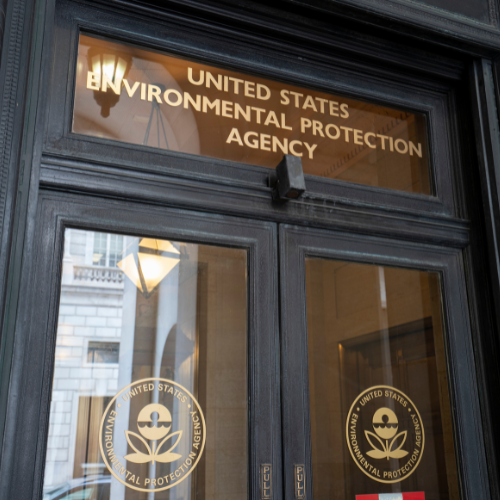
Veterans with Mesothelioma: Your Step-by-Step Guide
June 25, 2025
Federal Court Halts Biased Immigration Arrests in L.A.
July 14, 2025Big News: EPA Sticks with the Asbestos Ban and That's a Win for Everyone
In a major win for workers, families, and public health, the Environmental Protection Agency (EPA) announced on July 8, 2025, that it’s no longer trying to reverse the ban on chrysotile asbestos. In a positive move for human safety, the agency has decided to keep the Biden-era rule in place after some back-and-forth earlier this year. This decision comes after a strong wave of public outcry and growing scientific evidence on just how dangerous this substance still is.
At Brayton Purcell LLP, our asbestos lawsuit lawyers have been working for decades, standing up for people affected by asbestos exposure. And we’re glad to see this step in the right direction.
So, Why Did the EPA Change Its Mind?
Let’s rewind for a second. Earlier this year, the EPA said it might walk back the 2024 rule banning chrysotile asbestos; yes, the last type of asbestos still legal in the U.S. That idea didn’t sit well with health experts, legal pros, and everyday folks who’ve lived with the consequences of exposure.
As reported by the Arkansas Democrat-Gazette, the EPA faced serious backlash; public health advocates, legal professionals, and members of Congress were opposed. According to an EPA spokesperson, “We’ve heard the concerns raised loud and clear... Our mission is to protect human health and the environment.”
Isn’t Asbestos Already Banned?
Not entirely. Most types of asbestos have been phased out over the years, but chrysotile asbestos, sometimes called "white asbestos", has still been used in certain industries. Think chlor-alkali manufacturing, vehicle brakes, and sheet gaskets.
Even though it’s not as potent as other types, chrysotile asbestos is still harmful. The EPA puts it bluntly: “There is no safe level of asbestos exposure.” That risk doesn’t just affect the workers directly involved. Their families and communities are also put in harm’s way.
Here’s Why Asbestos Is Still a Big Deal
Asbestos exposure can lead to life-threatening illnesses. Such as:
- Mesothelioma – a rare but aggressive cancer
- Asbestosis – chronic lung scarring that makes it difficult and painful to breathe
- Lung cancer
- Ovarian and laryngeal cancers
The numbers don’t lie. Every year, roughly 40,000 people in the U.S. die from asbestos-related diseases. That includes workers and loved ones exposed secondhand, from something as simple as handling dusty work clothes.
Who Spoke Up to Defend the Ban?
Those who understand the damage that asbestos can cause on human health came out to support the ban on chrysotile asbestos. Advocacy groups like the Asbestos Disease Awareness Organization (ADAO), unions, environmental activists, and asbestos lawsuit lawyers all pushed back hard when the EPA hinted at a rollback.
Linda Reinstein from ADAO summed it up: “Too many families have already suffered.” Members of Congress, like Senator Jeff Merkley of Oregon, also chimed in. He said it best: “The science is clear. It’s time to eliminate asbestos entirely.”
And let’s not forget there are safe, effective alternatives out there.
We don’t need asbestos anymore, and keeping it around just isn’t worth the risk.
What This Means for Lawsuits and Accountability
From a legal standpoint, this decision is long overdue. “The continued use of chrysotile asbestos was never justifiable,” says James Nevin, partner at Brayton Purcell LLP. “We’ve helped countless families who were blindsided by asbestos exposure, and this decision reinforces what we’ve always known, companies can’t pretend they didn’t know the risks.”
It also makes it harder for corporations to dodge responsibility in court. With the EPA doubling down on the dangers of asbestos, the legal argument is clearer than ever.
If you or someone you love has been affected, connecting with experienced asbestos lawsuit lawyers is an important step. You don’t have to navigate this fight alone.
What About the Companies Still Using Asbestos?
Under the 2023 rule, chemical plants using asbestos diaphragms were given five years to switch to safer alternatives. Some tried to drag their feet or push for the rule to be reversed, but that’s no longer an option.
As of last year, only eight U.S. facilities were still using chrysotile asbestos. Now, they’ll have to adapt. Experts are clear: the technology to replace asbestos has been around for years.
Is the Fight Over?
Not quite. While the EPA’s decision is a huge step forward, asbestos is still present in many older buildings. Renovation and demolition projects can stir it up, putting workers and nearby residents at risk.
Linda Reinstein from ADAO hit the nail on the head: “We may have stopped new uses, but we must also address the legacy of asbestos that still exists.”
That’s where continued advocacy, and legal action, comes in. At Brayton Purcell LLP, we’re still on the front lines helping people who’ve been exposed, whether it happened recently or decades ago.
A Big Win, But There’s More Work Ahead
The EPA’s move to keep the chrysotile asbestos ban is a huge victory, thanks to tireless advocacy and public pressure. It’s proof that when people speak up, change can happen.
But there’s still more to do. From enforcing this ban to dealing with the asbestos that’s still out there, we must stay vigilant.
Need Help? Brayton Purcell LLP Is Here for You
If you or a loved one has been diagnosed with an asbestos-related disease like mesothelioma or asbestosis, don’t wait. Our team of seasoned asbestos lawsuit lawyers is ready to fight for you.
📞 Call us now at (800) 361-2417 or contact us online today.
We’re here to listen. We’re here to help. And we’ll never stop fighting for justice.
Sources:
- Neal Earley and Michael R. Wickline, "EPA reverses plan to undo asbestos ban," Arkansas Democrat-Gazette, July 9, 2025.
- Additional reporting from the Chicago Tribune and Asbestos Disease Awareness Organization (ADAO).















